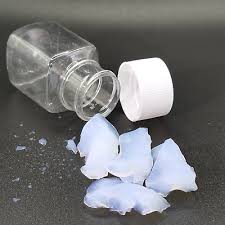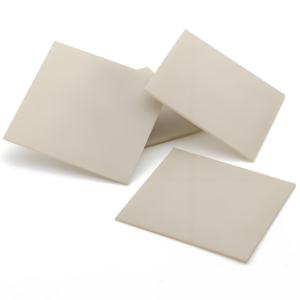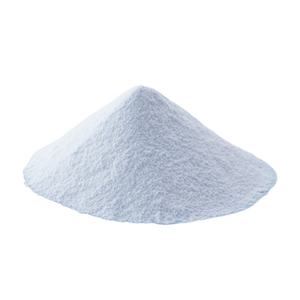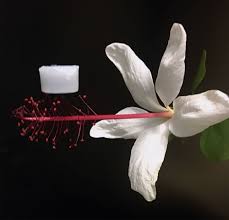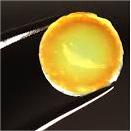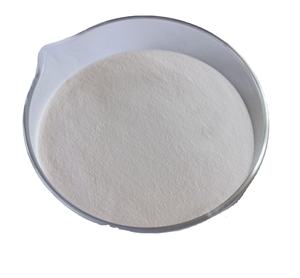Professional industry ceramic supplier, silicon nitride, silicon carbide, aluminum nitride and any other kinds of ceramics.
1. Introduction
Just 24 hours ago, a major U.S.-based advanced ceramics manufacturer announced a breakthrough in sintering technology that significantly extends the lifespan of silicon carbide crucibles used in rare-earth metal refining—a development poised to impact clean energy supply chains globally. This news underscores the growing strategic importance of high-performance ceramics like silicon carbide in both industrial and consumer applications.

Silicon carbide crucibles are far more than simple containers for molten metal. They represent a fusion of material science and engineering, designed to withstand extreme temperatures, thermal shock, and corrosive environments. But their utility doesn’t stop in foundries—silicon carbide is quietly revolutionizing kitchenware, plumbing, and even holiday table settings.
2. What Is a Silicon Carbide Crucible?
A silicon carbide crucible is a high-temperature container made primarily from silicon carbide (SiC), a compound known for its exceptional hardness, thermal conductivity, and resistance to wear and corrosion. These crucibles are essential in metallurgy, glassmaking, and laboratory settings where temperatures can exceed 1,600°C (2,912°F).
Unlike traditional clay or graphite crucibles, silicon carbide crucibles maintain structural integrity under rapid heating and cooling cycles. This makes them ideal for melting non-ferrous metals like aluminum, copper, and zinc without contaminating the melt.
3. Why Silicon Carbide Stands Out Among Advanced Ceramics
Silicon carbide belongs to the family of advanced ceramics—engineered materials that outperform conventional ceramics in strength, durability, and thermal performance. Compared to alumina (Al2O3) or zirconia (ZrO2) crucibles, silicon carbide offers superior thermal shock resistance and faster heat transfer.

When comparing boron carbide vs silicon carbide, the latter wins in cost-effectiveness and machinability for most industrial uses, though boron carbide excels in ultra-high hardness applications like armor. Meanwhile, silicon nitride (Si3N4)—another advanced ceramic—offers excellent fracture toughness but is generally more expensive and less thermally conductive than SiC.
4. Beyond the Foundry: Everyday Uses of Silicon Carbide Ceramics
You might be surprised to learn that silicon carbide isn’t just for factories. Its durability and aesthetic versatility have led to its use in premium ceramic dinnerware. Products like silicon carbide ceramic dinner plates, silicon carbide baking ceramic dish, and even silicon carbide ceramic butter dish with lid are gaining popularity among home chefs and artisans.
- Silicon carbide ceramic casserole dish with lid
- Silicon carbide ceramic serving bowls and platters
- Silicon carbide black ceramic plates and white variants for modern tablescapes
- Silicon carbide ceramic Christmas plates and holiday-themed serveware
These items benefit from SiC’s natural stain resistance, oven-to-table safety, and ability to retain heat—making them functional and stylish.
5. Industrial Components Made from Silicon Carbide

Beyond crucibles and dinnerware, silicon carbide forms the basis of numerous high-performance components:
- RBSiC silicon carbide tile blocks for kiln linings
- Silicon carbide ceramic columns and bricks for furnace construction
- Silicon carbide burner nozzles and thermocouple protection tubes
- Silicon carbide ceramic pipes and tubes for corrosive fluid handling
- Silicon carbide grinding discs and sanding discs for precision machining
Even plumbing fixtures leverage this material: silicon carbide ceramic disc taps and quarter-turn valves offer leak-free operation and decades of service life.
6. How Silicon Carbide Compares to Silicon Nitride in Crucible Applications
While silicon carbide crucibles dominate high-heat metal processing, silicon nitride crucibles—produced by specialized silicon nitride crucible factories—are preferred in niche applications requiring extreme mechanical strength at moderate temperatures, such as semiconductor crystal growth.
Custom silicon nitride heat shields, silicon nitride rings, and silicon nitride plates serve aerospace and electronics industries. However, the high purity silicon nitride powder market remains smaller and more volatile than that of silicon carbide, limiting widespread adoption.
7. Manufacturing and Customization Trends
Modern fabrication techniques allow for custom silicon carbide crucibles tailored to specific furnace geometries or chemical environments. Similarly, artisans now produce handcrafted silicon carbide ceramic plates for painting, children’s tableware, and oven-safe bakeware like pie dishes and ramekins.
The rise of e-commerce has made it easier to source specialty items like silicon carbide ceramic pasta bowls or blue-white porcelain-inspired plates—blending traditional aesthetics with cutting-edge material science.
8. Conclusion
From smelting furnaces to Sunday brunch tables, the silicon carbide crucible exemplifies how advanced ceramics bridge industrial necessity and everyday elegance. As manufacturing innovations continue—like the recent sintering breakthrough—silicon carbide will likely expand into even more domains, proving that this century-old material still has plenty of fire left.
Our Website founded on October 17, 2012, is a high-tech enterprise committed to the research and development, production, processing, sales and technical services of ceramic relative materials such as Silicon. Our products includes but not limited to Boron Carbide Ceramic Products, Boron Nitride Ceramic Products, Silicon Carbide Ceramic Products, Silicon Nitride Ceramic Products, Zirconium Dioxide Ceramic Products, etc. If you are interested, please feel free to contact us.

